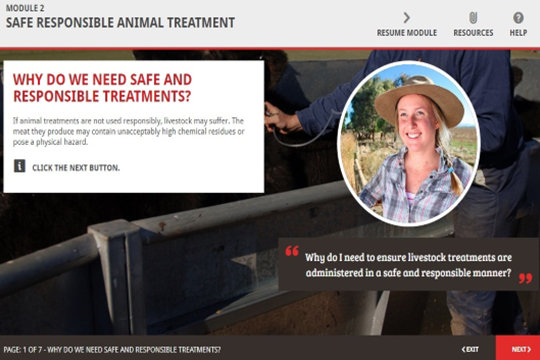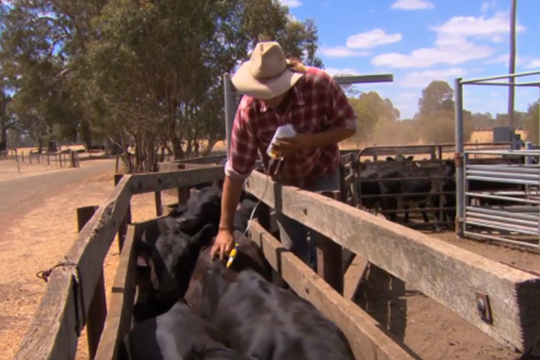
LPA Learning
Consolidate your knowledge on ‘Safe and responsible animal treatments’ by completing this LPA Learning module.
Every LPA accredited producer must undertake steps to ensure that animal treatments are administered in a safe and responsible manner that minimises the risk of chemical residues and physical hazards.
How can producers meet this LPA requirement?
To ensure they are delivering safe and responsible animal treatments, livestock owners are required to:
Why do we need safe and responsible treatments?
Our customers expect that livestock are treated responsibly and the meat we produce is safe. To ensure this, and protect the reputation of Australian red meat, animal treatments need to be safe.

Consolidate your knowledge on ‘Safe and responsible animal treatments’ by completing this LPA Learning module.

Watch this video to understand how animal treatments are administered safely and responsibly.
Livestock producers must ensure veterinary drugs are only used when necessary, that animals get an effective course of treatment, and there is minimal risk of adverse side effects – including carcase residues or physical contaminants.
For veterinary treatments:
Item four of the LPA checklist for safe and responsible animal treatments covers what is required to meet this LPA requirement. It outlines:
-Do you ensure that any equipment used to administer or measure animal treatments is working correctly before use and clean it before and after you use it?
ISC recommends you document how you address each item in the checklist. In this example, you would record how you clean equipment before and after use and how you check the applicator is calibrated and operationally efficient. The checklist does state that cleaning needs to be recorded so ISC suggests noting this when completing the treatment record by adding that the equipment is cleaned and calibrated.
Anyone applying or handling chemicals must be able to demonstrate competency in the storage, handling, preparation, use and disposal of chemicals. Ideally, livestock producers will hold or be under the supervision of someone that has a current recognised chemical user’s certificate. Certificates should be stored and presented during the LPA audit.
Question 1 on the cattle LPA NVD is: ‘Have any of the cattle in this consignment ever in their lives been treated with hormonal growth promotants (HGP)?’ You should tick yes on Question 1 of the NVD if:
You should only tick no if you are absolutely certain animals have not been treated with HGPs. Remember both male and female cattle can be treated with HGPs.
On the EU cattle NVD, the declaration section specifies that:
Don’t forget that cattle treated with HGPs must be identified by a triangular ear punch so they can be kept separate where necessary. Some customers and markets do not want to buy meat that has been treated with HGPs.
Read more about HGPs and completing the LPA NVD.
The withholding period (WHP) for meat is the minimum time after an animal is treated with a veterinary medicine or pesticide before it may be legally slaughtered for human consumption. Withholding periods are set to ensure that chemical residues, if any, in the carcase are below the maximum residue limit allowed for that chemical in food in Australia. In general, slaughter and feeder animals should not be treated with a veterinary drug if the withholding period exceeds the expected date of departure from a property.
Product labels can be viewed on the PubCRIS database.
An export slaughter interval (ESI) is the period that must lapse between chemical application to livestock and their slaughter for export. Compliance with the ESI means that the slaughtered livestock will meet the residue limits which apply in all export markets. ESIs are revised throughout the year, which means the ESI printed on your LPA NVD may be out of date. For the latest version, visit www.apvma.gov.au/esi.
For any treatment given to an animal, even from a vet, the batch number and expiry date of the product used must be recorded. A good tip is to ask the vet to put the product expiry date and batch number on the invoice. Any product that does not have a visible batch number or expiry date should not be used.